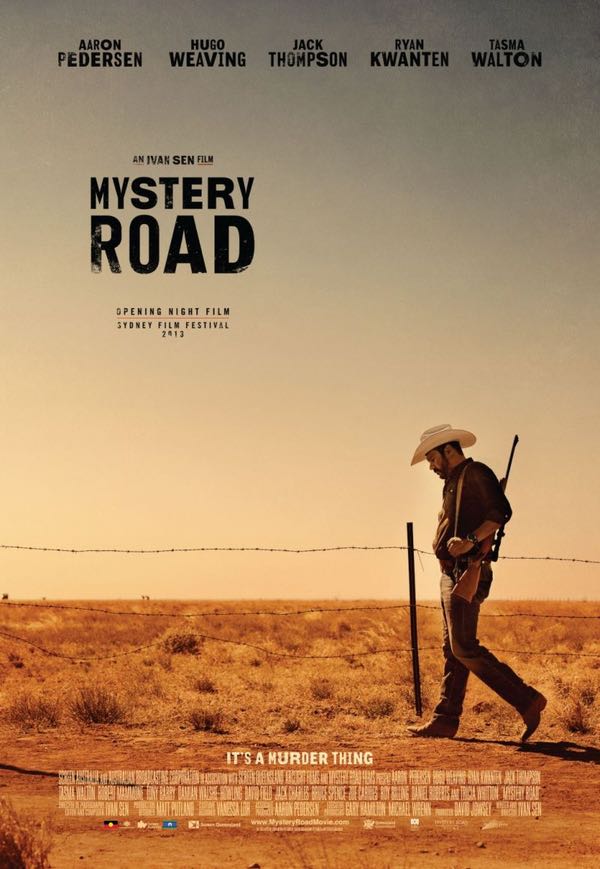

No gods, no kings, no billionaires


Over the last couple of days I’ve moved sunpig.com and other assorted domains to a new server. Still at Linode, but on a newer version of Ubuntu (20.04), with newer versions of nginx and PHP, and using MariaDB as a drop-in replacement for MySQL. The move seems to have gone fine. The two main drivers for the upgrade were that the WordPress dashboard was starting to complain about my PHP being out of date, and nginx periodically stopping and needing a manual restart. (I temporarily worked around that by using a cron job that restarted nginx every hour, whether it needed it or not. It was faster than setting up Monit, but not a great solution for the long term.)
I switched to the latest WordPress theme, twenty-twenty-one. It’s billed as a portfolio default theme rather than a blog-focused one, but I’m giving it a shot here anyway. It’s definitely very minimal. I like the font stack using system defaults, lazy loading images is nice, but having the search box tucked down at the bottom of the page feels wrong. We’ll see if it sticks.
In the middle of 2019 I bought myself a very nice Blue Yeti microphone with a boom arm, partly as a replacement for the cheap headset I’d been using until then, and partly as a toy when a few colleagues and I had been thinking about doing a podcast together. The podcast didn’t come together, but the microphone was nice. I used a set of Apple wired earbuds plugged into it as monitors.
Over time I found the setup to be a little cumbersome, though. On my desk I have a big screen directly in front of me, and my laptop up on a stand to the side. I had the microphone positioned for optimal use with the laptop’s built-in camera. As lockdown kicked in back in March, and as my new role at work required a lot of video calls, I was spending more and more time slightly twisted or angled in my chair. This led quickly to neck and shoulder pain. As it became clear that I wouldn’t be travelling again for white a while, I needed to find a better solution.
I had got Abi a set of wireless AirPods Pro for Christmas last year. Various colleagues also were using AirPods (pro and non-pro) for video calls, and I decided to try them out for myself. I bought a pair of nearly-new ones via Tweakers back in April, and they’ve turned out to be a great purchase. Not perfect. Sometimes one of the buds will fail to charge in its case, and I’ll go into a call with only one ear active. There’s some kind of bluetooth glitch between my work laptop (but not my personal laptop) and the AirPods that causes the laptop to occasionally drop the BT connection to the headphones and all other BT devices (keyboard, mouse) before reconnecting again. It only happens when I’m on a video call, though, not when I’m listening to music. This is very annoying, and no amount of resetting the AirPods or the laptop’s BT module fixed it. The problem even persisted when the entire laptop was replaced. A comment way down in this reddit thread has been the solution for me: set Zoom to use the AirPods for audio output, but use the laptop’s built-in microphones for input. So that takes me back to having a separate headphones and microphone solution again, but at least my audio doesn’t randomly cut out in the middle of conversations.
(They also don’t keep my ears warm on a cold day, but I don’t leave the house much any more. And I haven’t travelled with them yet, so I don’t know how tense I’ll feel about them dropping out of my ear while running through an airport.)
The second part of the ergonomic solution here was to get a webcam to mount on the big screen straight in front of me. This was easier said than done, because pandemic. Around March/April webcams became very hard to buy. Availability was low, and prices were sky-high. There’s some availability again now by the end of the year, but prices have remained high, despite them being essentially the same models from 5 years ago.
When I couldn’t find a real webcam, I tried using an old iPhone 6 taped to my monitor with a webcam app. The picture quality was good, but the experience of using it was terrible. In the end I convinced Fiona to let me borrow the standalone webcam from her desktop PC, with the promise of getting her a new one once they came back in stock. So I’m running with Fiona’s old Logitech C270 now, and a few months ago I got her a new Logitech StreamCam. The video quality of the C270 isn’t great, but it’s good enough. Now that I’ve figured out that I can only reliably use my AirPods Pro in video calls for sound, but not as a microphone, maybe I’ll look around for offers on a new webcam in the new year.
All this allowed me to break down the big microphone + boom arm combo from my desk, which gave me back quite a bit of visual space. Another thing I did at the same time was replace my 20+ year-old Arcam Alpha 7 amplifier with a ridiculously tiny €35 Nobsound stereo amp. The source selector knob on the Arcam had developed a wobble over time, and the L-R stereo balance was off. I’m sure audio purists will look down on the Nobsound, but I only have one input source, and it drives my Mission 750 LE speakers just fine, even without bi-wiring. It also frees up more space on my desk.
Still in the office area, we bought a Brother MFC-L3770CDW colour laser printer in January, and it has been amazing. Unlike the tiny amp, this is a big device, but it replaces two smaller printers (a Samsung mono laser, and an HP all-in-one inkjet) to take up not much more space overall. I do a lot of reading on my OP course, and I prefer to do that with paper printouts that I can scribble on and mark up with highlighter. I print mostly in black and white, but the colour option is nice to have for occasional use, and it’s fast. Also, the built-in document scanner does double-sided scans, and has a document feeder. Finally, it takes separate C/M/Y/K toner cartridges that aren’t DRM-locked to a single manufacturer – third-party recycled high-capacity units are easily available. I love this printer.
This is also the first full year that we’ve been using a rice cooker. I think we got it sometime in the autumn of 2019, when Alex was living away, but honestly I don’t remember. I can’t imagine life without a rice cooker any more. They’re transformational. If you make rice, like ever, and you’ve never used one before, you owe it to yourself to invest €20-30 in even a low-end device. (That’s what ours cost.) You’ll never cook rice in a pan again.
This was also the year we got radiation shielding window shutters installed on the back of the house. Recent summers in NL have brought weeks of heat waves, and this will help keep our non-air-conditioned house a few degrees cooler. We also got the draughty balcony door in Alex’s bedroom replaced.
Some things I explicitly haven’t bought or upgraded this year include a new iPhone (I want it for the new camera system, but so long as I’m not travelling, going to concerts, or leaving the house much at all, my 3-year-old iPhone X is going strong), a PS5 (not for lack of desire – I just missed out on all the pre-order opportunities), and a Marantz NR1711 receiver to replace our old NR1603, which doesn’t pass handle 4K video (so long as the only 4K video source we have is the Apple TV, I’m content to keep switching between video inputs on the big TV; but the whole point of using receiver is so that I don’t have to do that. Well, that and the whole surround sound thing.)
Oh and then there was all the A/V kit and connectors we needed to assemble Studio A…
As for why it’s been a while since the last Mixed Media post, see my previous answer. I’m still writing a lot; the output is just ending up in different places. Including, curiously, a 2000+ word private diary entry I seem to produce at the start of each of my exams online timed assessments.
Under the pre-pandemic regulations most of the modules were assessed by a two-hour hand-written (don’t get me started) exam. Because the exam centres are closed or inaccessible now, the alternative arrangement is that we get a similar set of exam questions at home, and we have 48 hours to write essays on 2 of the 5 topics. Because of the open-book format, the essays can be longer and make better use of references.
The exam paper is given to us at 10:00 UK time. I download the exam paper at the appointed hour, and take my time to look over the questions, and…start writing about something else? I could rationalize this as a way of reflecting on my first impressions, as a warm-up exercise, or as a simple avoidance technique. However, in my readings for this term (Life Career Development) I came across a much-referenced paper by Ashforth, Kreiner, & Fugate (2000) about everyday role transitions and boundary-crossing activities.
Most of us have different roles we adopt in our daily lives depending on context: parent, husband, colleague, manager, subordinate, etc. One way of examining these roles is by how segmented or integrated they are. Strongly segmented roles have high boundaries between them, enforced by behavioural norms or physical distance, for example a parent who works as an airline pilot. You can’t easily cross over between the two. More integrated roles have blurred boundaries, for example an engineer who is also a manager, and who has to jump back and forth between identities multiple times throughout a day depending on which meeting they’re in.
The more segmented two roles are, the easier it is to maintain boundaries between them, but the harder it is to cross back and forth. More integrated roles imply blurrier boundaries. Ashforth et al. propose that more segmented roles are more likely to be associated with “rites of passage” – little rituals a person performs when they leave one role and enter another. Think: putting on a uniform at work, or listening to your favourite podcast on your bus journey home from work. We construct these rituals to help us maintain boundaries, and to adjust to the demands of a different role.
In a work context, people have different preferences for how segregated or integrated they want their jobs to be. This has shown up quite a bit during this pandemic, when many office workers have been forced by circumstances into a more integrated lifestyle. This suits some people, but others have found it enormously stressful, and have had to work hard to establish and maintain new boundaries.
Rituals and ceremonies around role transitions can play a key part, and my “diversion” before getting down to the business of actually writing my exam essays may be a part of that: it’s what I do to get my head in the game. I spend a couple of hours clearing my mind, writing about what’s been going on all around me, trapping my thoughts in a document so they can’t ambush me in the middle of the assessment.
It also gives me something to look back at and gauge my mental state before each of these exams, and recognize that no matter how much preparation and studying I do for each one, I still feel stressed and unprepared. And yet I’ve come out of each one so far with a decent grade? We’ll see how this most recent one turns out.
And now I also realize that my process for getting into the right mindset around an exam strongly resembles how I find my way back into a Mixed Media post after a gap of four months?

⭐️ Mystery Road
I’m going to give this a whole section of its own, because it spans movies and TV. Mystery Road the movie is from 2013. The sequel, Goldstone dates from 2016. Seasons 1 and 2 of the TV show Mystery Road were broadcast in 2018 and 2020, but the timeline of the TV show takes place between the first film and the second. After reading about them on Metafilter, I watched the films and the TV show in timeline order. They’re noir detective stories set in rural Australia, dealing with issues of race, greed, corruption, and exploitation. The cinematography is gorgeous, and Jay Pedersen as detective Jay Swan puts in a terrific performance as a man who is both driven and tormented by his pursuit of justice.
Episodic Video (TV)
Films
Books
Music
For me, this year has been characterised by long stretches of listening to all the works of a single artist or group. Halsey at the start of the year, Underworld in spring and early summer, The Naked And Famous late summer, and Dua Lipa has been the soundtrack of my December. I listened to the Song Exploder episode about Levitating back in October, but it took me a month or two to catch up. The Song Exploder TV show is also great, but I haven’t watched all the episodes yet. Fynn Kliemann’s thousand-plus track playlist of chilled out beats has been a regular palette-cleanser.
According to Spotify, I was in the top 0.005% of Underworld listeners this year. With 1.3M monthly listeners, I think that puts me into their top 100 devotees? What can I say? Drift is really good.
Podcasts
Home Cooking with Samin Nosrat (of Salt Fat Acid Heat fame) and Hrishikesh Hirway (of Song Exploder fame) is a delight. It’s a funny, charming, unpretentious cooking show with enough vegetarian (see note above) consideration to keep me happy. I need to try Marcella Hazan’s simple tomato sauce recipe, as noted in episode 2, soon.